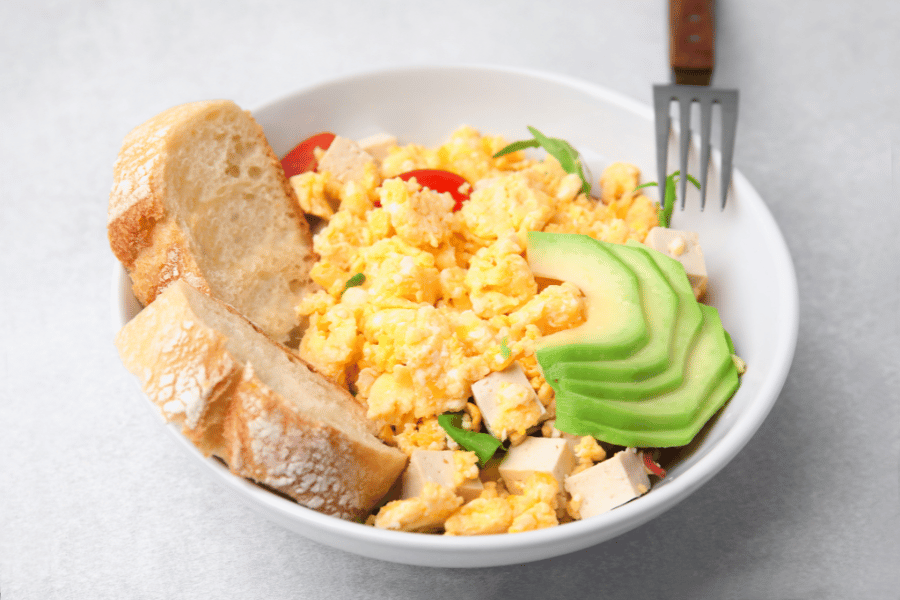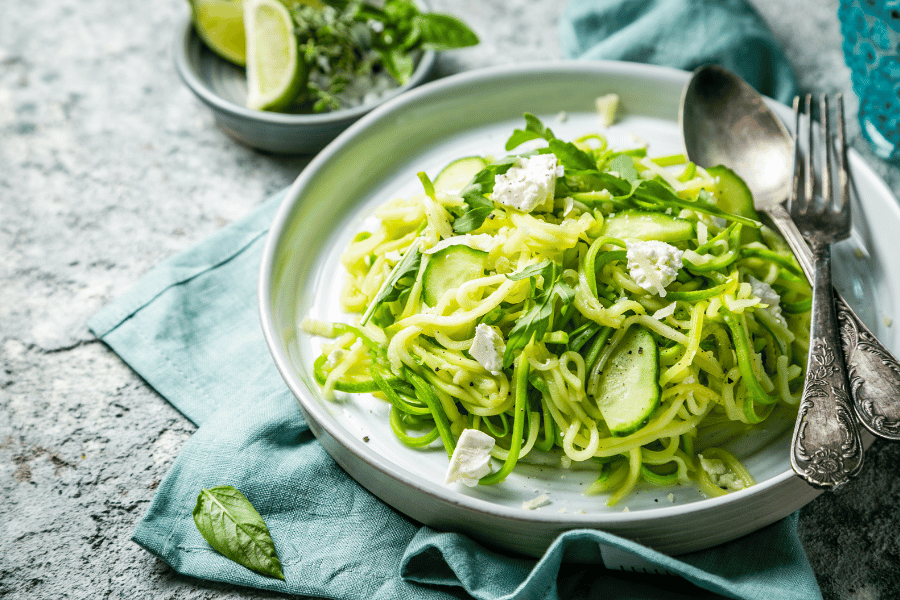Embarking on a weight loss journey can be a transformative experience, and the keto diet has emerged as a popular and effective method to achieve significant results. This guide is designed to introduce beginners to the basics of ketosis, unravel the science behind the keto diet and its effectiveness in weight loss, and set you on a path to lose 10 pounds in 30 days.
Understanding the Basics of Ketosis:
- Ketosis Explained: The keto diet pivots on the principle of ketosis, a metabolic state where the body burns fat for energy instead of carbohydrates. This shift is achieved by significantly reducing carb intake and focusing on high-fat, moderate-protein foods.
- Benefits of Ketosis: Entering ketosis can lead to more efficient fat burning, increased energy levels, and reduced appetite, making it a powerful tool for weight loss.
The Science Behind the Keto Diet and Weight Loss:
- Fat as Fuel: By using fat as the primary energy source, the body taps into stored fat more readily, which can lead to weight loss.
- Insulin Levels: A low carb intake can help stabilize blood sugar and insulin levels, aiding in the reduction of fat storage and appetite.
This introduction sets the foundation for your keto journey. As we proceed, we will explore how to prepare for the keto diet, including essential foods and meal planning, and guide you through the first crucial 30 days to achieve your weight loss goal of shedding 10 pounds.

Preparing for Your Keto Journey
Embarking on a journey with the keto diet to lose weight requires careful preparation. Understanding what foods to include, how to plan your meals, and setting realistic goals are pivotal steps in ensuring success.
Essential Foods and Ingredients for a Keto Diet:
- High-Fat Foods: Focus on healthy fats like avocados, nuts, seeds, and olive oil. These are vital for maintaining energy levels without carbs.
- Quality Proteins: Include sources of quality protein such as grass-fed meat, fish, and eggs to help with muscle maintenance and satiety.
- Low-Carb Vegetables: Opt for green, leafy vegetables like spinach, kale, and broccoli, which are low in carbs but high in fiber and nutrients.
Planning Your Meals: A 30-Day Keto Diet Blueprint:
- Meal Prep: Planning and preparing your meals in advance can help you stick to the keto diet, especially in the initial phase.
- Sample Meal Plan: Create a 30-day meal plan with a variety of recipes to keep the diet interesting and avoid monotony.
Setting Realistic Goals and Tracking Progress:
- Weight Loss Targets: Set achievable weight loss goals for the 30-day period. Remember, healthy weight loss is gradual.
- Progress Tracking: Keep track of your progress by regularly monitoring your weight, body measurements, and how you feel.
Preparing for your keto diet journey involves not just understanding the diet but also equipping yourself with the tools and plans needed for success. By focusing on the right foods, meal planning, and goal setting, you can effectively navigate your initial 30 days on the keto diet.

The First 10 Days: Kickstarting Your Keto Diet
The initial phase of the keto diet is crucial for setting the tone for your weight loss journey. The first 10 days are often about adjusting your diet, overcoming initial challenges, and monitoring your body’s response.
Adjusting Your Diet and Overcoming Initial Challenges:
- Carb Withdrawal: Transitioning from a carb-heavy diet to a keto diet can lead to temporary symptoms like fatigue or cravings. It’s important to stay committed during this adjustment period.
- Hydration and Electrolytes: As your body adapts to ketosis, staying hydrated and maintaining electrolyte balance is key to mitigating initial side effects.
Simple and Effective Keto Recipes for Beginners:
- Easy Meals: Start with simple recipes that don’t require extensive cooking skills. Think omelets, avocado salads, and grilled meats with low-carb vegetables.
- Snack Options: Have keto-friendly snacks like nuts, cheese, or Greek yogurt handy to curb hunger pangs without breaking your carb limit.
Monitoring Your Body’s Response and Adapting:
- Listen to Your Body: Pay attention to how your body reacts to the new diet. Some may need more fats or proteins to feel satisfied.
- Adjustments: If you’re feeling lethargic or hungry, don’t hesitate to adjust your fat and protein intake. The keto diet is flexible and can be tailored to individual needs.
These initial 10 days are a period of adaptation and learning. By focusing on simple recipes, staying hydrated, and being attentive to your body’s needs, you can smoothly transition into the keto lifestyle and start seeing results.
Maintaining Momentum: Days 11-20 on the Keto Diet
As you progress into the second phase of your keto journey, maintaining momentum becomes key. This period is about solidifying the habits you’ve started and overcoming any plateaus to stay motivated.
Incorporating Exercise with Your Keto Diet:
- Exercise Integration: Start incorporating moderate exercises, like brisk walking or cycling, to complement your diet. Exercise can accelerate fat burning and enhance your overall health.
- Listen to Your Body: Pay attention to how your body responds to exercise while on keto. You may need to adjust your workout intensity or duration.
Overcoming Plateaus and Staying Motivated:
- Plateau Phase: It’s common to experience a plateau in weight loss during this phase. Stay patient and remember that progress isn’t always linear.
- Motivation Tips: Keep yourself motivated by celebrating small victories, whether it’s sticking to your diet, improving your exercise routine, or simply feeling more energetic.
Tips for Eating Out and Social Events on a Keto Diet:
- Restaurant Choices: When eating out, opt for keto-friendly restaurants or dishes like salads with protein, grilled meats, and vegetables.
- Social Gatherings: At social events, focus on the company rather than the food. Bring your own keto-friendly snacks if needed.
This middle phase is about reinforcing the keto lifestyle and finding ways to integrate it seamlessly into your daily life. With the right exercise regimen and strategies for social situations, you can maintain your momentum on the keto diet and continue working towards your weight loss goals.
The Final Stretch: Days 21-30 and Beyond
Entering the final stretch of the 30-day keto diet challenge, it’s time to reflect on your progress and plan for a sustainable, long-term keto lifestyle.
Advanced Keto Recipes and Meal Ideas:
- Experiment with New Recipes: As you become more comfortable with keto, start experimenting with more diverse and complex recipes. This can include keto versions of your favorite dishes.
- Meal Variety: Introduce a variety of foods to ensure you’re getting all the necessary nutrients. Incorporate different types of proteins, healthy fats, and low-carb vegetables.
Evaluating Your 30-Day Progress and Next Steps:
- Assess Weight Loss: Reflect on the amount of weight lost and how close you are to your goal. Remember, weight loss is one of many benefits of the keto diet.
- Health Improvements: Evaluate other health improvements, such as increased energy levels, better sleep, or improved blood sugar levels.
Transitioning to a Sustainable Long-Term Keto Lifestyle:
- Long-Term Planning: Consider how you can sustain the keto diet long-term. This might involve more flexible dietary approaches like cyclical keto or targeted keto.
- Lifestyle Integration: Think about how you can integrate keto into your lifestyle permanently. This includes finding balance in social settings, adapting workouts to your energy levels, and listening to your body’s needs.
As you conclude the initial 30-day keto journey, the focus should shift from short-term weight loss to adopting a sustainable approach that aligns with your health goals and lifestyle. The keto diet is not just a temporary fix but can be a lifelong journey towards better health and well-being.
FAQ Section: Navigating the Keto Diet for Weight Loss
In this FAQ section, we address some of the most common questions about using the keto diet for weight loss, providing clarity and guidance for those embarking on this journey.
Q1: How to Begin a Keto Diet for Maximum Weight Loss? A1: Start by reducing carbohydrate intake to about 20-50 grams per day and focus on high-fat, moderate-protein foods. It’s also important to stay hydrated and maintain electrolyte balance during the initial transition.
Q2: Understanding Macronutrient Ratios and Calorie Intake A2: The typical macronutrient ratio for a keto diet is about 70-80% fat, 15-20% protein, and 5-10% carbohydrates. Caloric intake varies per individual, so consider using a keto calculator to determine your specific needs.
Q3: What Are the Common Side Effects When Starting a Keto Diet? A3: Common side effects include the “keto flu,” characterized by fatigue, headache, and irritability, usually occurring in the first week as your body adapts to ketosis. Drinking plenty of water and getting adequate salt can help alleviate these symptoms.
Q4: Managing the Keto Flu and Other Initial Hurdles A4: To manage keto flu, increase your intake of electrolytes (sodium, potassium, magnesium), stay hydrated, and ensure adequate sleep. Eating small, frequent meals can also help in the initial transition period.
Q5: Can Exercise Enhance Keto Diet Results? A5: Yes, combining the keto diet with regular exercise can enhance fat loss and improve overall health. However, you may need to adjust the intensity and duration of your workouts as your body adapts to burning fat for fuel.
Q6: How to Overcome Weight Loss Plateaus on the Keto Diet? A6: Overcoming plateaus may involve reassessing your calorie intake, changing up your exercise routine, or ensuring you are accurately tracking your carb intake.
Q7: What Are the Best Practices for Sustaining Weight Loss After the 30-Day Keto Diet? A7: Best practices include continuing to monitor your carb intake, staying consistent with your exercise routine, and making the keto diet a sustainable lifestyle choice rather than a short-term diet.